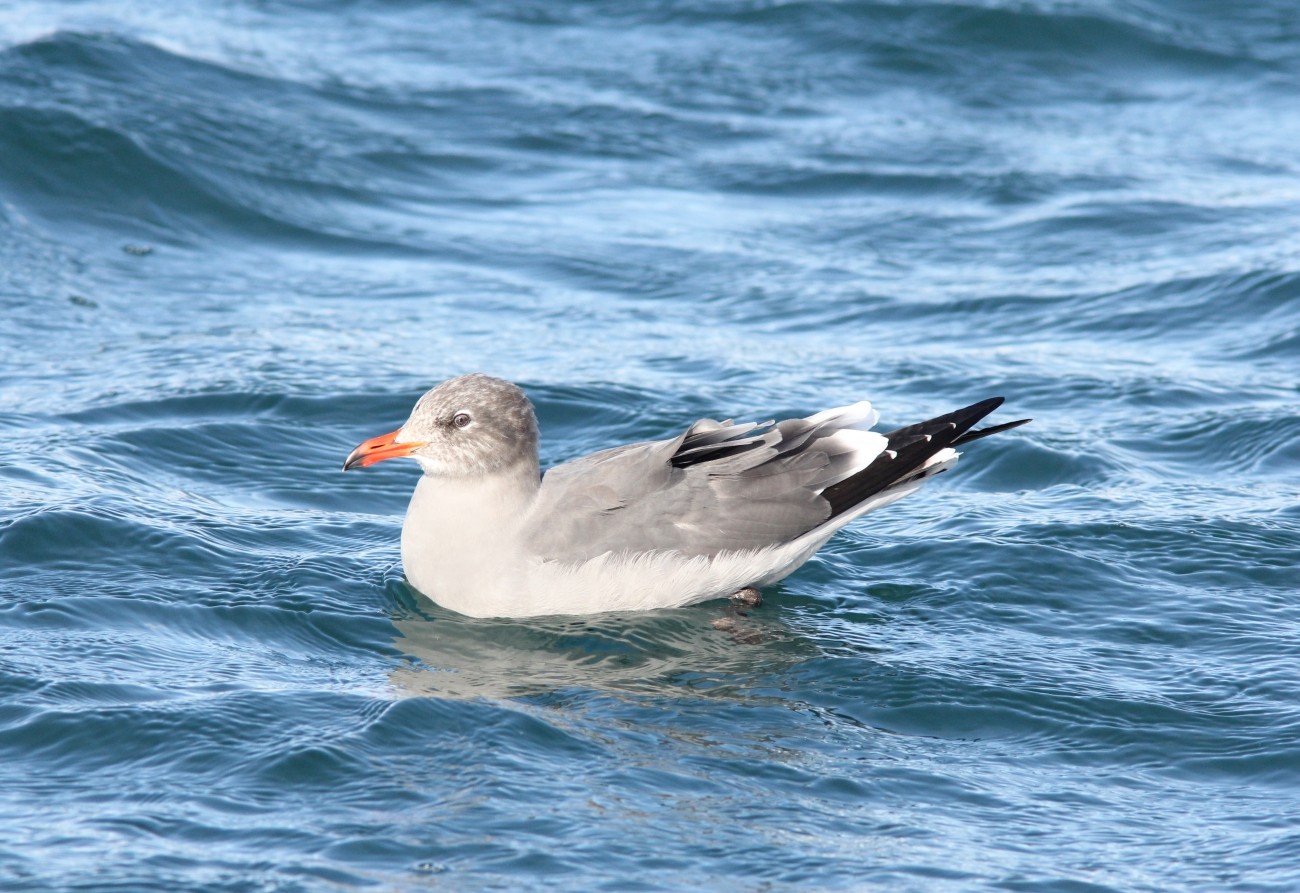Heermann's Gull
A species of Gulls Scientific name : Larus heermanni Genus : Gulls
Heermann's Gull, A species of Gulls
Botanical name: Larus heermanni
Genus: Gulls
Content
Description People often ask General Info
Description
This species looks distinctly different from other gulls. Adults have a medium gray body, blackish-gray wings and tail with white edges, and a red bill with a black tip. The head is dusky gray in non-breeding plumage and white in breeding plumage. Immatures resemble non-breeding adults but are darker and browner, and the bill is pink till the second winter. A few birds, no more than 1 in 200, have white primary coverts, which form a showy spot on the upper wing. This gull is unlikely to be confused with other species as it is the only white-headed, gray-bodied gull found on the west coast of North America. Calls are described as deep and similar in pattern to other gulls but is noticeably different in quality. 
Size
46 - 53 cm
Colors
Black
Gray
White
Life Expectancy
24 years
Nest Placement
Ground
Clutch Size
1 - 3 eggs
Feeding Habits
Heermann's Gull are omnivores, feeding on marine animals, carrion, eggs, insects, lizards, and refuse. They dip or submerge their heads at sea and pick food on land or from kelp beds. They pirate meals from seabirds, especially targeting Brown Pelicans. Diet includes sardine, anchovy, herring, smelt, crustaceans, mollusks, shrimp, and squid.
Habitat
Heermann's Gull typically inhabits coastal environments and the adjacent open ocean. This bird species prefers nesting on arid rocky islands with sparse vegetation, such as cacti and salt-tolerant shrubs. Common low-elevation, coastal climate settings align with its habitat needs, as heermann's Gull largely forages within marine areas that are within 10 miles of shorelines. These areas include kelp beds, tide pools, and estuaries. For resting, heermann's Gull selects beaches, rocky outcrops, and even man-made structures like piers and pilings.
Nest Behavior
The nesting period typically sees heermann's Gull building their nests and laying eggs in sync with their colony. Both parents partake in the incubation of the eggs and later in rearing the hatchlings, displaying remarkable teamwork in the care of their young.
Nest Characteristics
Heermann's Gull's nests are simple ground scrapes about 9–14 inches across, often situated on islands in rocky or grassy areas. These nests are lined with materials like feathers, grasses, sticks, flotsam, or shells, providing some cushioning for the eggs.
Dite type
Piscivorous
People often ask
General Info
Feeding Habits
Bird food type
Behavior
Heermann's Gull exhibit a monogamous mating system with shared parental responsibilities, from incubation to chick-rearing. These birds display a unique courtship ritual where males fly overhead and call, prompting females to perform a 'groveling' behavior paired with a squeaky call. Males reciprocate with courtship feeding, a gesture that continues through incubation shifts. During breeding, heermann's Gull are sociable, nesting proximate to their kind, yet distancing from larger gulls and terns. Post-breeding dispersal leads heermann's Gull northward to the United States, where they form small flocks and coalesce with other seabirds, maintaining gregarious interactions throughout the seasons.
Distribution Area
Of the current population of about 150,000 pairs, 90% nest on the island of Isla Rasa off Baja California in the Gulf of California, with smaller colonies as far north as California and as far south as Nayarit. After breeding, birds commonly disperse to central California, and less commonly north as far as British Columbia and south as far as Guatemala. Some birds exhibit strong site fidelity to their nonbreeding territories, including a one-legged gull who resided for 17 years at the Loch Lomond Marina in San Rafael, California. The only known active breeding colony of Heermann's gull in the continental United States is located in Seaside, California, when a small number of gulls were observed nesting on artificial fill islands on Roberts Lake as of 1999. After the islands eroded away by 2007, the colony continued to nest on nearby rooftops. In June 2018, one of the colony's main nesting sites, the Seaside McDonald's, was destroyed by a drunk driving accident. In April 2019, after obtaining a permit from the City of Seaside, the Monterey Audubon Society deployed a floating artificial nesting island in Roberts Lake in an effort to restore nesting territory to the colony. 
Species Status
Not globally threatened.
